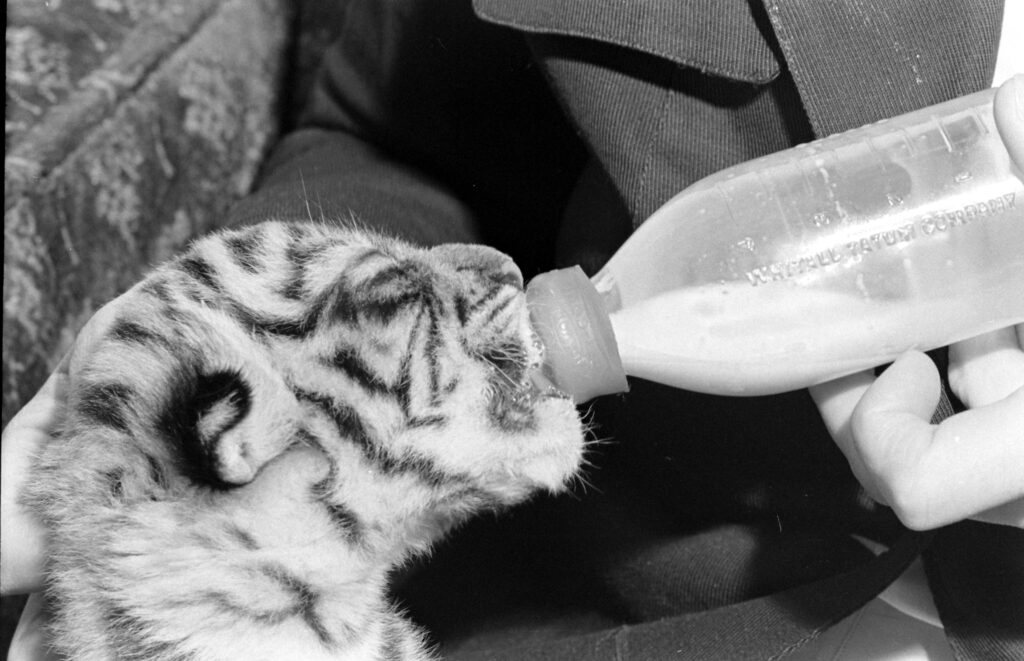Written By: Ben Cosgrove
There’s something quietly audacious about sending one of the world’s finest photographers—in the midst of a world war—to document the lives of goats. But that’s just what LIFE magazine did in the summer of 1942, when Alfred Eisenstaedt shipped out to south central Texas to visit “Goat King” Adolph Stieler and his 600 Angoras.
As LIFE told its readers in its August 31, 1942 issue, Angora goats “look like aristocrats, and they should, for Angoras are the blue-blooded elite of the goat world.”
Their long, curly, silky fleece, known commercially as mohair, is used in making fine upholstery, yarn and fabrics. Angora goats are dainty, shy and not at all smelly. Their fleece is so rich in healthy oil (lanolin) that goatmen who handle them a lot have pink, soft hands like a baby’s.
Goats are among the oldest and best friends that man has. There are 137 mentions of goats in the Bible. Goats were among the first animals brought to America by Captain John Smith and Lord Delaware. A frisky Arabian goat, according to legend, discovered the stimulating effects of the coffee bean. Great thinkers of history like Zoroaster, Buddha and Confucius all said kind words about goats. Modern men who get to know them, including author Carl Sandberg, conductor Arthur Rodzinski and Mahatma Gandhi, usually think they are wonderful. . . .
So. Take a gander at Eisenstaedt’s photographs, and decide for yourself if Angora goats really are all they’re cracked up to be. Also, please do take the time to read the captions that accompany the pictures; it’s not every day, after all, that one comes across an observation as insightful and weirdly moving as, “Shorn goats crowd together for warmth and mutual sympathy. They are not pretty now and they know it.”
Even blue-blooded elites, it seems, have feelings. Who knew?
Liz Ronk edited this gallery for LIFE.com. Follow her on Twitter @lizabethronk.

The Angora goats were not yet a year old.
Alfred Eisenstaedt The LIFE Picture Collection/Shutterstock

Goats ate cigarette butts and owners encouraged them, because tobacco kills intestinal parasites.
Alfred Eisenstaedt The LIFE Picture Collection/Shutterstock

A flock of 600 Angoras headed for home pastures at the ranch of ‘Goat King’ Adolph Stieler near Comfort, Texas.
Alfred Eisenstaedt The LIFE Picture Collection/Shutterstock

Angora goats, Texas, 1942.
Alfred Eisenstaedt The LIFE Picture Collection/Shutterstock

A shearing crew went to work on four of Stieler’s Angoras.
Alfred Eisenstaedt The LIFE Picture Collection/Shutterstock

An unhappy Angora kid was pushed into the dip after he had been sheared. Dip is a brownish, foul-smelling chemical mixture which safeguarded the shorn animals against ticks.
Alfred Eisenstaedt The LIFE Picture Collection/Shutterstock

Shorn goats crowded together for warmth and mutual sympathy.
Alfred Eisenstaedt The LIFE Picture Collection/Shutterstock

The original LIFE caption deadpanned, “Goats love to browse standing up. The leaves they can’t reach look greenest.”
Alfred Eisenstaedt The LIFE Picture Collection/Shutterstock

General MacArthur had been the prize fleece buck at most recent goat show and sale at Rocksprings, Texas. He sold at auction for $530. Note the hair on his face and belly, signs of good Angora
Alfred Eisenstaedt The LIFE Picture Collection/Shutterstock

Angora goat auction and sale, Texas, 1942.
Alfred Eisenstaedt The LIFE Picture Collection/Shutterstock

Angora goat auction and sale, Texas, 1942.
Alfred Eisenstaedt The LIFE Picture Collection/Shutterstock

Angora goat auction and sale, Texas, 1942.
Alfred Eisenstaedt The LIFE Picture Collection/Shutterstock

A man examined goods in a mohair warehouse, Texas, 1942.
Alfred Eisenstaedt The LIFE Picture Collection/Shutterstock

Mohair warehouse, Texas, 1942.
Alfred Eisenstaedt The LIFE Picture Collection/Shutterstock

This mohair warehouse at Kerryville, Texas, belonged to the goat-raising Schreiner family, who also owned hotels, banks, and stores. Scott Schreiner (left) was shown here with a local mohair buyer.
Alfred Eisenstaedt The LIFE Picture Collection/Shutterstock

Mohair products included curtains, mittens, toy dogs, rugs, blankets. Before World War II much mohair was used in auto upholstery. Huge stocks of were used to replace restricted wool.
Alfred Eisenstaedt The LIFE Picture Collection/Shutterstock
























